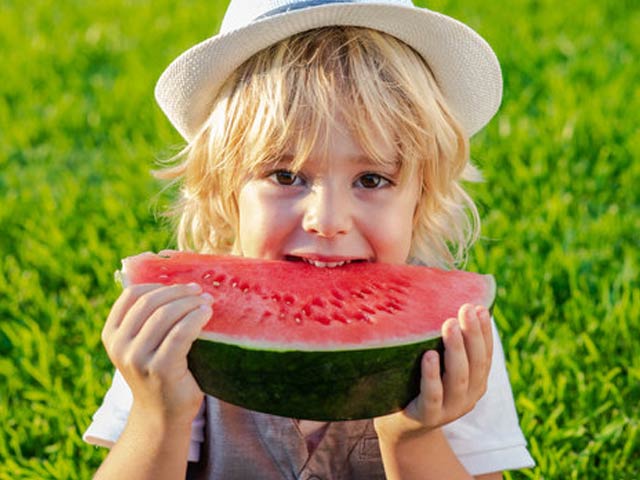Providing children with a balanced diet is very important for their health, which is unfortunately neglected in our country.
Due to unhealthy diet and dietary habits, the health and growth of the child is adversely affected, along with they cannot perform well in academic and co-curricular activities. According to experts, due to non-supply of balanced food, a child shows weakness in determining the stages of physical and mental development.
Due to this, iron deficiency is most common in children along with other weaknesses that have negative effects on their physical and mental health. Most of the children have difficulty with memory, low IQ level, incomplete grasp of something and difficulty in expressing their feelings.
Balanced diet is currently the biggest problem of developing countries which is affecting our overall national situation. According to the School Age Children’s Health and Nutrition Survey 2020, ninety percent of school-going children are severely deficient in iron in their diet. Similarly, according to the National Nutrition Survey 2018, 49 percent of five-year-old children face iron deficiency.
In total, 80 percent of children are deficient in iron, calcium, zinc and vitamin A, 60 percent of children are deficient in vitamin C, 25 percent are deficient in vitamin B and 75 percent are deficient in folate. Similarly, 64 percent of children should have a protein ratio of 30 percent and a starch ratio of 10 percent.
By maintaining the above-mentioned ratio, children can be physically and mentally active, agile and active and able to show high performance in curricular and extra-curricular activities.
According to the research data of Aga Khan University, due to lack of supply of balanced nutrition, annual income is decreasing up to three billion dollars. According to the National Nutrition Survey 2018, iron deficiency is found in every second child in Pakistan. Due to which factors like slowness in the growth and learning process of children, shortness of breath and mental weakness begin to occur, school attendance of children is affected but they also lag behind in other competitions of life.
Experts recommend that special care should be taken to ensure that the food being given to the baby contains a variety of ingredients. A healthy plate scheme should plan for the two main meals of the day, lunch and dinner, which can be useful not only for a child’s needs but for a lifetime. Inclusion of vegetables in children’s diet is very important.
Children between the ages of one and two years should be given vegetables twice a day, while children aged two to five years should be given vegetables three times a day. Among vegetables, leafy greens are a good source of fiber, vitamins, as well as minerals like folic acid and iron. Iron is very important for a child’s brain development.
Experts believe that children who do not get the required amount of vitamin C daily are prone to skin diseases, iron deficiency, tooth loss, weak bones and delayed wound healing. . Vitamin A deficiency can lead to poor eyesight or blindness in children under the age of five. Among vegetables, carrots and pumpkin are good sources of vitamin A, while eggplants are rich in calcium, magnesium, potassium and B vitamins. It is rich in important ingredients like five.
Broccoli provides potassium in addition to vitamin K, vitamin C, and vitamin A. Rice, wheat, flour, bread, potatoes, barley, and corn are foods that should make up 25 percent of a child’s plate. The group is a healthy source of carbohydrates and vitamins as well as fats that provide energy to the body.
Experts say that 50 to 60 percent of the calories in a child’s diet should consist of carbohydrates. The two main meals in a child’s day must include meat or eggs, which are important sources of iron. The rest of the baby’s food plate is made up of pulses. This group includes beans, pulses, chickpeas, and soybeans, which contain vitamins and important minerals like iron, zinc, and magnesium.
Vegetable oil must be used in the preparation of baby food, commonly used oils include olive oil, canola oil, sunflower oil, corn oil, coconut oil. According to experts, each vegetable oil has different types of components, according to them, olive oil contains omega-3, while soybean, canola, sunflower oil also contains omega-3.
Fruits are also essential for children. From the age of one to five years, the child should be given three servings of fruit per day. should be given as three servings on a daily basis, milk, cheese and yogurt provide calcium, which is essential for bone and muscle growth. According to a World Bank report, 65 percent of children do not perform well in education after primary level, which is also due to poor nutrition.
The role of a balanced diet in children’s health and education is very important, which should be highlighted through the media and provide guidance to parents.
(function(d, s, id){
var js, fjs = d.getElementsByTagName(s)[0];
if (d.getElementById(id)) {return;}
js = d.createElement(s); js.id = id;
js.src = “//connect.facebook.net/en_US/sdk.js#xfbml=1&version=v2.3&appId=770767426360150”;
fjs.parentNode.insertBefore(js, fjs);
}(document, ‘script’, ‘facebook-jssdk’));
(function(d, s, id) {
var js, fjs = d.getElementsByTagName(s)[0];
if (d.getElementById(id)) return;
js = d.createElement(s); js.id = id;
js.src = “//connect.facebook.net/en_GB/sdk.js#xfbml=1&version=v2.7”;
fjs.parentNode.insertBefore(js, fjs);
}(document, ‘script’, ‘facebook-jssdk’));



